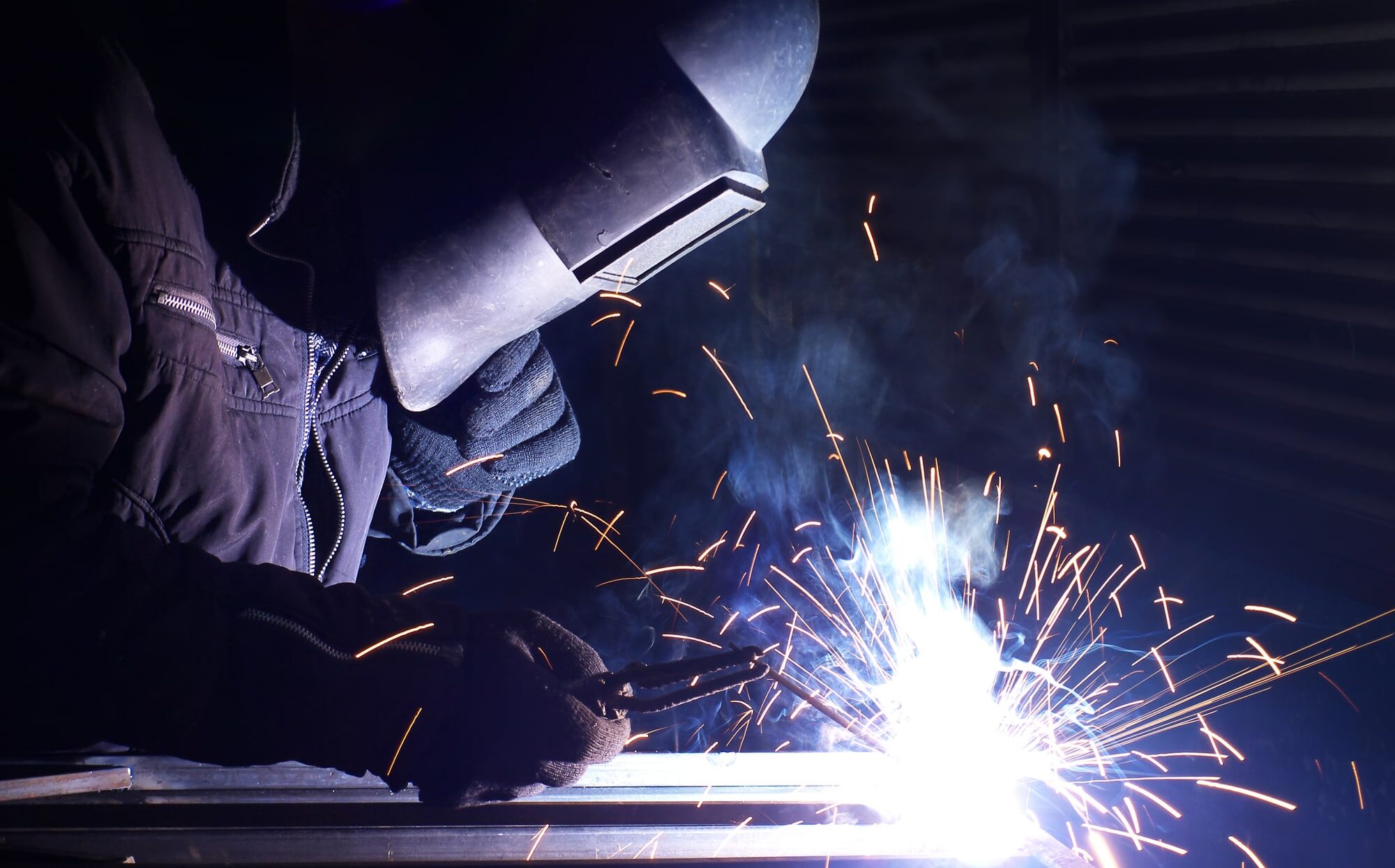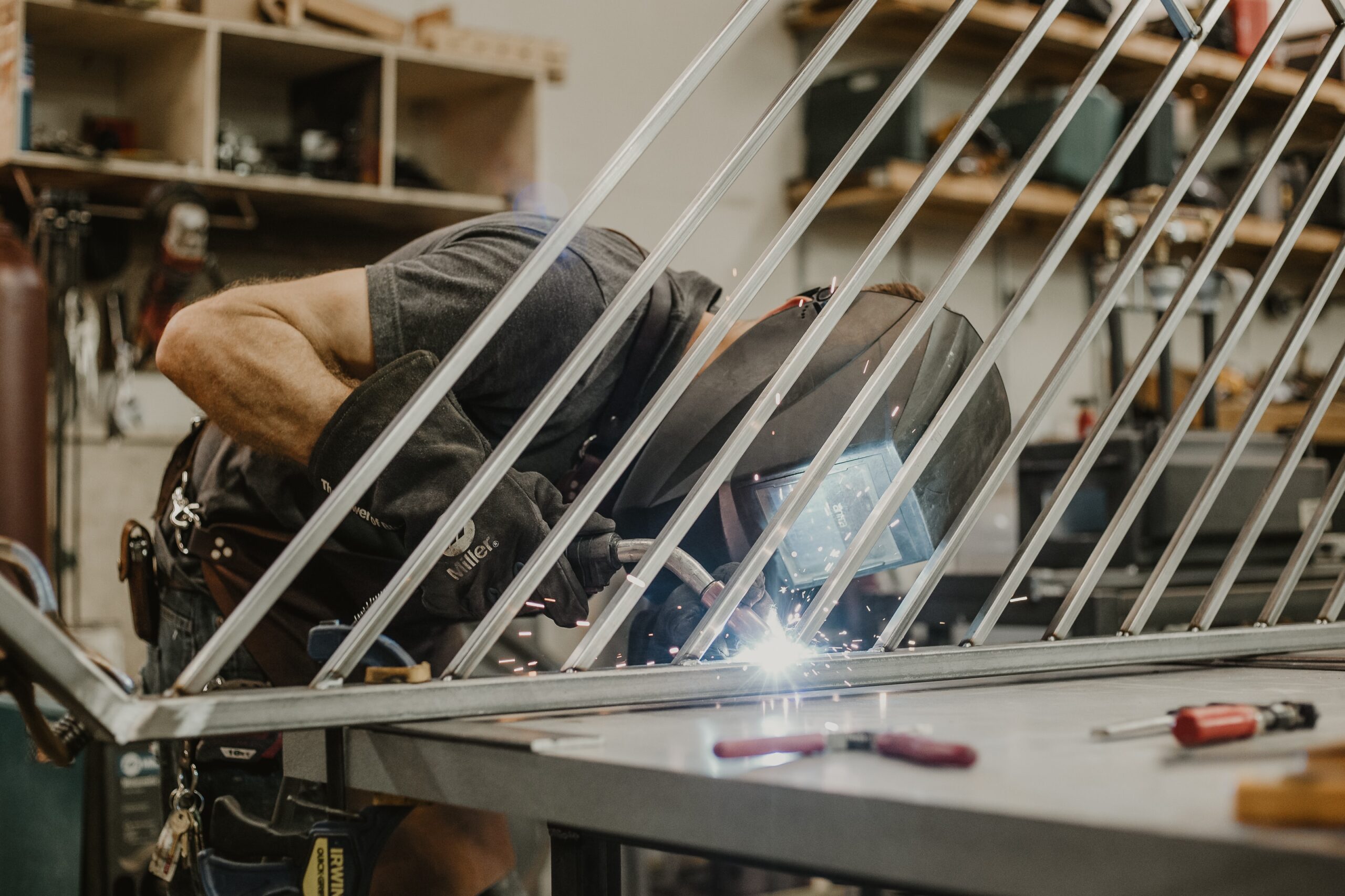Everything about Welding: Trick Insights Into Techniques and Best Practices for Success
Welding incorporates a variety of methods, each suited for particular products and applications. Recognizing these methods, such as GMAW, SMAW, and TIG, is crucial for attaining optimal outcomes. The appropriate tools and safety and security methods can not be ignored. As prep work and repairing play crucial duties in the welding process, grasping these elements can significantly boost the top quality of the last product. What are the key elements that guarantee an effective weld?
Comprehending Different Welding Methods
Welding strategies encompass a range of approaches, each suited to details applications and materials. Among the most common strategies are Gas Metal Arc Welding (GMAW), Secured Steel Arc Welding (SMAW), and Tungsten Inert Gas Welding (TIG) GMAW, also understood as MIG welding, is prominent for its speed and flexibility, making it ideal for slim materials. SMAW, or stick welding, is preferred for its simpleness and effectiveness in outdoor environments, specifically with thicker metals. TIG welding offers precision and control, making it ideal for elaborate work and non-ferrous steels (Montana Mobile Welding and Repair Welding). Each technique has its unique advantages and factors to consider, enabling welders to pick the most effective approach based upon the project's needs, material type, and desired end results. Comprehending these methods is necessary for successful welding
Important Welding Devices and Devices
While different welding methods call for details skills, the right tools and tools are equally vital for accomplishing quality results. Necessary welding equipment consists of welding machines, which vary depending on the strategy-- such as MIG, TIG, or stick welding. Safety equipment, including gloves, headgears, and aprons, warranties security and comfort during the process. On top of that, clamps and components aid secure materials in location, making certain accuracy in welds. Consumables like welding poles, cable, and shielding gas are also essential components that affect the quality of the weld. In addition, devices such as grinders and cutters assist in surface preparation and post-weld ending up, contributing to a specialist outcome. Buying premium tools eventually boosts the efficiency and effectiveness of welding jobs.
Security Practices in Welding
Proper safety techniques are essential in the welding market to protect workers from possible hazards. Welders must put on suitable individual safety equipment (PPE), consisting of headgears with appropriate shading, handwear covers, and flame-resistant garments. Adequate air flow is crucial to decrease direct exposure to hazardous fumes and gases created during the welding procedure. In addition, employees ought to be learnt the appropriate handling of welding tools to avoid accidents. Fire safety and security actions, such as keeping combustible materials away from the welding location and having fire extinguishers conveniently available, are required. Regular examinations of tools and offices can aid recognize prospective threats prior to they lead to mishaps. By sticking to these safety and security methods, welders can develop a more secure working setting and lessen risks connected with their trade.
Preparing Materials for Welding
Preparing materials for welding is an important step that considerably influences the quality and stability of the end product (Montana Mobile Welding and Repair Belgrade). Correct prep work involves cleaning up the surfaces to remove pollutants such as oil, dust, and corrosion, which can jeopardize the weld. Methods such as grinding, sanding, or making use of solvents are commonly utilized to achieve a tidy surface area. Furthermore, ensuring that the products fit with each other snugly is important; spaces can result in weak welds. It's also essential to consider the positioning and positioning of the parts, as this will certainly affect the convenience of welding and the last result. Picking the proper filler product and guaranteeing compatibility with the base steels is crucial for attaining strong, long lasting welds.
Tips for Getting High-Quality Welds
Accomplishing top notch welds calls for interest to information and adherence to finest practices throughout the welding procedure. Proper joint prep work is vital, making sure surface areas are clean and free from pollutants. Picking the suitable filler product and welding technique based on the base metals is crucial for excellent bonding. Keeping constant travel rate and angle while welding can advertise and stop flaws harmony. In addition, controlling warmth input is necessary; too much heat can cause warping and compromised joints. Consistently examining the welds during the procedure enables immediate adjustments if needed. Using proper post-weld treatments, such as cleaning and stress alleviation, can boost the toughness and honesty of the weld, eventually making certain an effective end result.
Repairing Usual Welding Issues
Welding often provides obstacles that can impact the high quality and stability of the last product. Common concerns such as porosity, inconsistent weld grains, and overheating can arise, each needing particular fixing techniques. Comprehending these troubles is crucial for welders to improve their skills and attain excellent outcomes.
Porosity Problems Clarified
Although porosity can often be overlooked, it stays an important problem in welding that can compromise the honesty of a completed product. Porosity refers to the existence of little gas pockets within the weld grain, which can lead and weaken the joint to premature failing. This problem generally arises from pollutants, moisture, or improper protecting gas coverage during the welding process. To reduce porosity, welders ought to verify that the base materials are tidy and completely dry, make Get More Info use of proper securing gases, and maintain constant welding specifications. Routinely examining the equipment and environment can likewise aid determine potential concerns prior to they show up in the weld. Dealing with porosity properly is essential for achieving solid, long lasting welds that fulfill high quality requirements.

Irregular Weld Beans
Inconsistent weld grains can substantially affect the quality and strength of an ended up item. Different elements add to this issue, including improper travel speed, incorrect amperage setups, and inconsistent electrode angles. When the welder moves also swiftly, a bead might show up slim and lack penetration, while moving too slowly can cause extreme build-up. Additionally, utilizing the incorrect amperage can cause either damaging or extreme spatter, both of which concession weld honesty. The welder's method, such as irregular lantern activity, can likewise bring about irregular grain look. To mitigate these issues, welders should concentrate on preserving constant, controlled activities and ensuring appropriate tools settings to accomplish harmony in their welds. Consistency is key to accomplishing strong and trusted welds.
Getting Too Hot and Warping Issues
Extreme warm throughout the welding procedure can cause significant getting too hot and warping problems, impacting the architectural stability of the workpiece. These issues typically manifest as distortion, which can jeopardize alignment and fit-up, making additional assembly challenging. Factors contributing to overheating include the option of welding criteria, such as voltage and take a trip rate, in addition to the kind of product being welded. To reduce these concerns, welders should preserve constant traveling rate and appropriate warmth input while keeping track of the workpiece temperature. In addition, preheating or post-weld heat therapy can aid ease stress and anxieties brought on by fast cooling - Montana Mobile Welding and Repair Belgrade Welding. Normal examination and adherence to ideal techniques click here for info are necessary in stopping overheating and ensuring the long life and reliability of bonded structures
Regularly Asked Concerns
What Are the Occupation Opportunities in the Welding Industry?
The welding sector uses varied job opportunities, including settings as welders, assessors, engineers, and educators. Experts can function in manufacturing, building, aerospace, and automotive markets, taking advantage of solid demand and competitive wages in different roles.
Just How Can I Enhance My Welding Speed Without Giving Up Quality?
To enhance welding speed without giving up top quality, one should click here to read practice efficient strategies, maintain equipment, enhance setups, and enhance hand-eye control. Routine training and looking for feedback can also substantially add to achieving quicker, top notch welds.
What Certifications Are Offered for Welders?
Numerous accreditations exist for welders, consisting of those from the American Welding Society (AWS), the National Facility for Building And Construction Education And Learning and Research (NCCER), and various industry-specific organizations. These credentials boost employability and demonstrate ability proficiency.
Exactly How Does Welding Impact the Residences of Metals?
Welding influences the properties of metals by altering their microstructure, which can lead to changes in ductility, stamina, and firmness. Heat input and cooling rates throughout the process significantly influence these product attributes.
Can I Bonded Dissimilar Metals Together?

Comments on “Top advice from Belgrade Welding professionals”